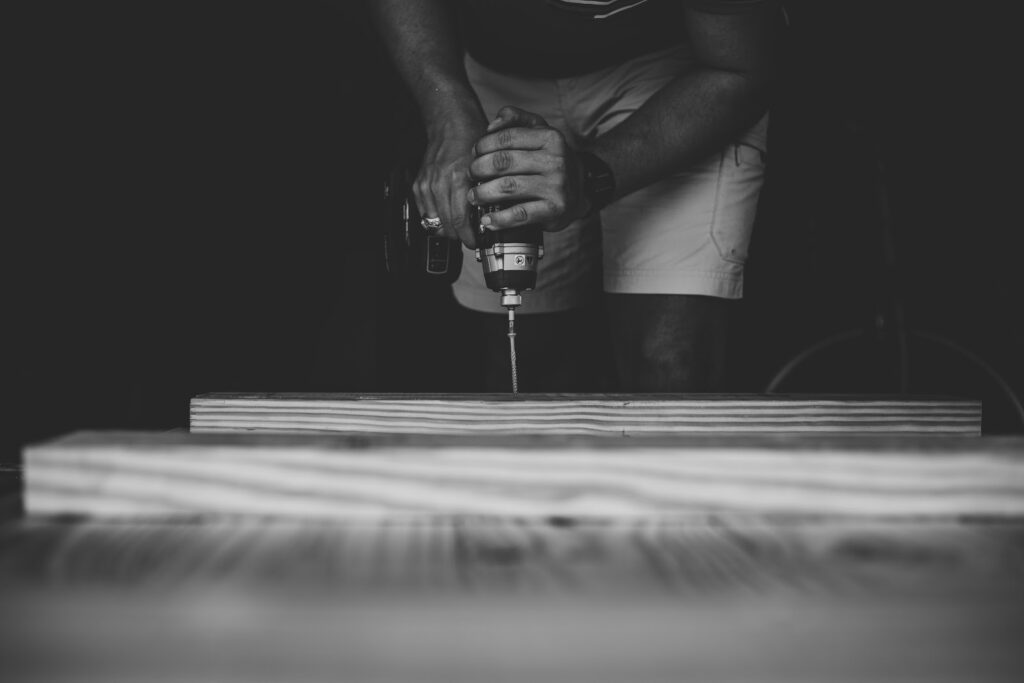Home improvement projects improve your home’s quality and functionality and offer a satisfying way to engage your creativity and hands-on skills. Understanding the essential tools you need is the first step toward mastering DIY home improvement.
As the saying goes, “the right tool for the right job.” It couldn’t be more accurate when it comes to home improvement projects. Whether fixing a leaky faucet, building a bookshelf, or remodeling a room, the right tools can make all the difference. But a trip to the hardware store can be overwhelming for the uninitiated. This article aims to demystify the process by outlining the essential tools every DIYer should have.
5 Important Tools You Need For DIY Home Improvement Projects
Essential Tools for DIY home improvement
Here are the top tools that are essential for any DIY home improvement project:
Basic hand tools
First, every homeowner should have a set of essential hand tools that can be used for various projects, from hanging shelves to assembling furniture.
When investing in high-quality hand tools, look for ergonomic handles or non-slip grips for added comfort and ease of use.
Power drill
A power drill is a vital tool for any DIYer. You can quickly drill holes in wood, metal, or even concrete with the glass drill bits. A power drill with screwdriver bits can also speed up assembling furniture or hanging shelves.
When choosing a power drill, consider the battery life and power options. A cordless drill offers more flexibility but may require frequent charging. On the other hand, a corded drill provides constant power, but the length of the cord may limit you. For more heavy-duty projects, consider investing in an impact driver. This tool is similar to a drill but delivers extra torque, making it perfect for driving long or large screws into rigid materials.
Saw
A saw is another essential tool for any DIY project involving wood. A hand saw can handle most basic cutting needs, but a power saw will save time and effort on larger projects. There are various types of power saws available, each designed for different purposes:
- Circular saw: Ideal for straight cuts in lumber or plywood.
- Jigsaw: Perfect for curved or angled wood, plastic, or metal cuts.
- Miter saw: Used for precise crosscuts and angles on molding, trim, and other materials.
- Table saw: A versatile tool that can handle a wide range of cutting needs with adjustable blades and fence settings.
When choosing a power saw, consider the type of projects you plan to undertake and the level of precision you need.
Safety gear
Safety should always be a top priority when undertaking any DIY project. Essential safety gear includes safety glasses, gloves, and ear protection. These protect your eyes, hands, and ears from debris or loud noises while working. Consider using a dust mask or respirator if you plan to work with power tools. It will protect you from inhaling sawdust, paint fumes, or other harmful particles.
Painting supplies
Painting is one of the most common DIY home improvement projects. If you want to achieve a professional-looking finish, invest in high-quality painting supplies. These include brushes, rollers, drop cloths, and painter’s tape.
When selecting brushes and rollers, consider the type of paint you will be using and the surface you will paint on. For example, a small brush is ideal for cutting along edges or corners, while a larger roller is better suited for covering larger areas.
Additional tools
Apart from the essential tools mentioned above, there are a few additional tools that can prove to be invaluable for specific do-it-yourself (DIY) projects:
- Stud finder: This handy tool utilizes electronic sensors or magnets to locate wall studs precisely. By identifying these sturdy structures, you can confidently hang heavy objects or securely mount shelves, ensuring stability and preventing wall damage.
- Adjustable wrench: This versatile tool comes in various sizes and is designed to tighten or loosen nuts and bolts. Its adjustable feature allows for easy adaptation to different sizes of fasteners, making it an essential tool for any DIY enthusiast. Whether assembling furniture, fixing plumbing issues, or working on automotive repairs, an adjustable wrench will always be handy.
- Hacksaw: This specialized cutting tool is perfect for tackling various materials, including metal pipes, rods, or plastic. With a sharp blade and a sturdy frame, a hacksaw enables precise and controlled cutting. It is an indispensable tool for DIY projects that involve modifications or repairs to pipes, rods, or similar materials.
- Caulking gun: When sealing gaps or joints in walls, windows, or doors, a caulking gun is a must-have tool. Applying caulk along edges or gaps can effectively prevent air or water leaks, enhance insulation, and improve the overall appearance of your DIY projects. The caulking gun ensures a controlled and consistent flow of caulk, allowing for neat and professional-looking results.
The last word
Mastering the craft of DIY home improvement requires having the right tools at your disposal. Investing in the essential tools mentioned above allows you to attempt various projects and achieve professional-looking results. Always prioritize safety and invest in high-quality tools that will last you for years. With these tools, you can turn your house into a personalized and functional home, one project at a time.





